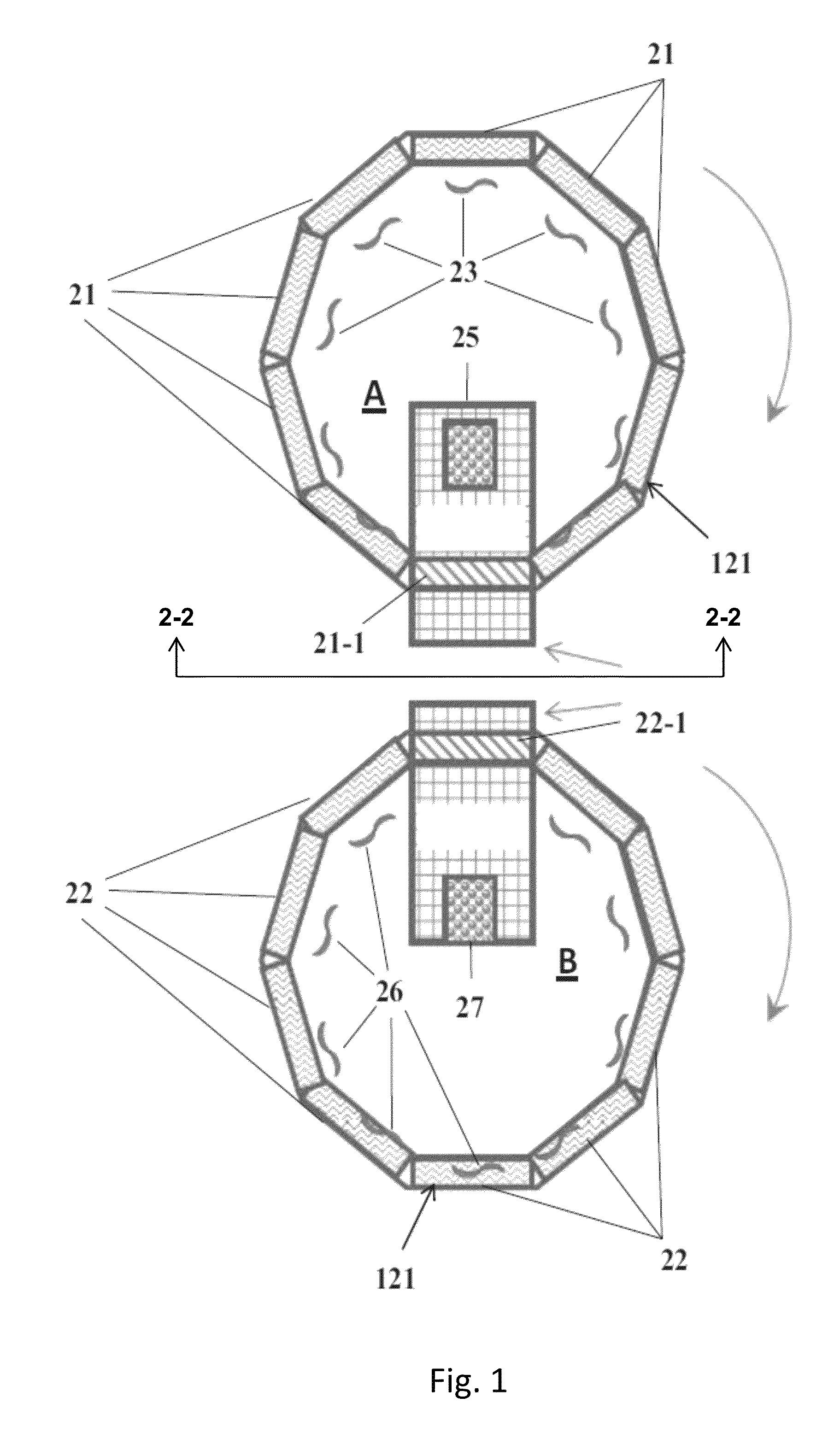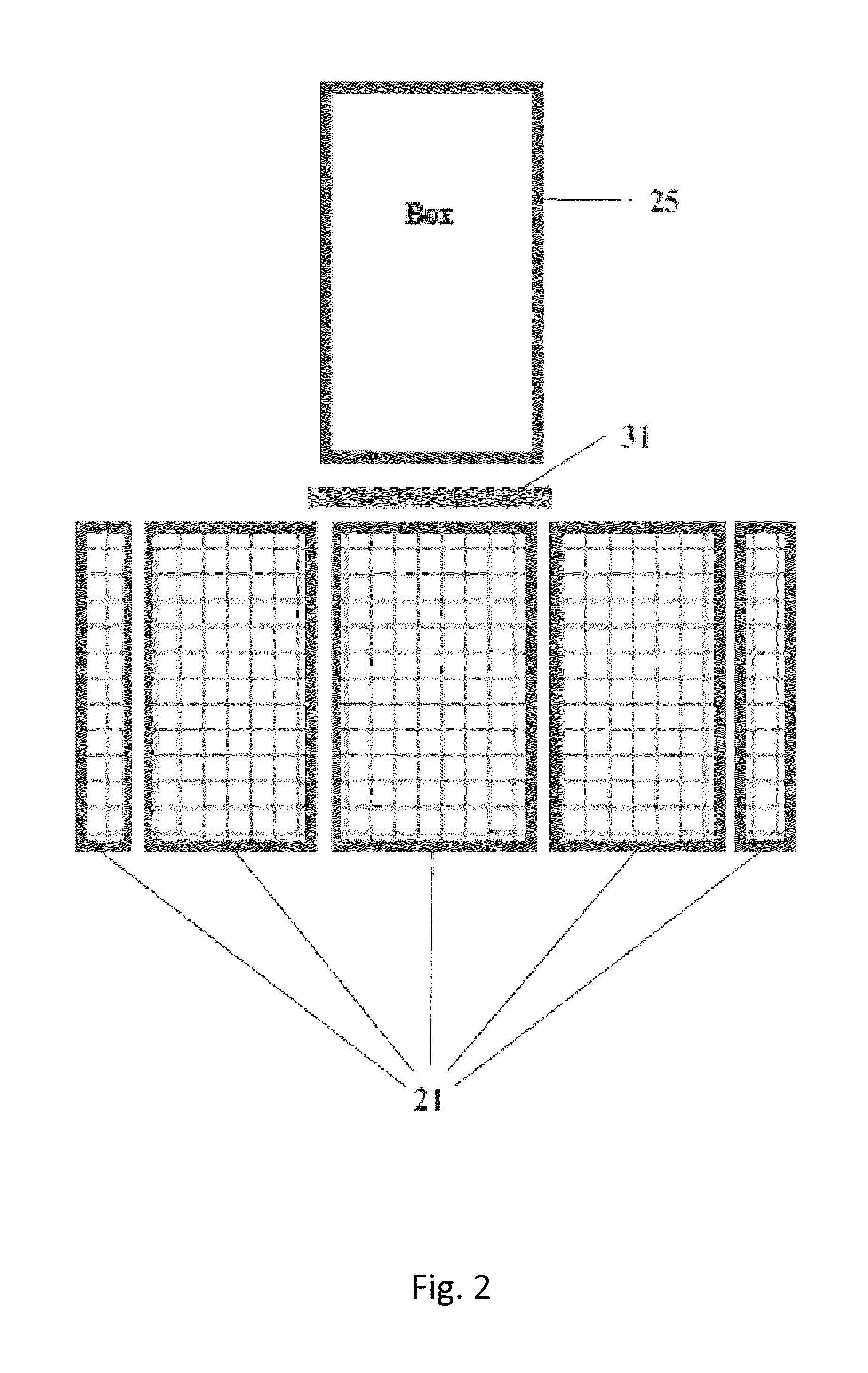Rotating multi-monolith bed movement system for removing co2 from the atmosphere
a multi-monolith bed and movement system technology, applied in the direction of separation processes, dispersed particle separation, chemistry apparatus and processes, etc., can solve the problems of no feasible way to avoid using fossil fuels during the rest of the century, no solution, etc., to achieve lower overall costs, lower capital expenses, and high efficiency
- Summary
- Abstract
- Description
- Claims
- Application Information
AI Technical Summary
Benefits of technology
Problems solved by technology
Method used
Image
Examples
Embodiment Construction
[0032]A conceptual design for a system to perform these operations is shown in FIGS. 1 and 2. A slight variation on the concept is shown in FIGS. 3 and 4. The overall conceptual design is discussed above, and a detailed discussion of the operation and the ancillary equipment that will be required is set out below.
[0033]In this embodiment, there are ten “monoliths” located in a decagon arrangement and which are located on a circular track. There are two circular / decagon assemblies associated with each process unit and they interact with each other (see FIGS. 1-4). Air is passed through the monoliths by induced draft fans located on the inner sides of the monoliths. At one location the monoliths are in a position adjacent to a single sealable chamber box, into which each monolith is inserted, as shown by vertically moving the bed out from the track, for processing (i.e. where they are heated to a temperature of not greater than 130 C., and more preferably not above 120 C., preferably ...
PUM
| Property | Measurement | Unit |
|---|---|---|
| temperature | aaaaa | aaaaa |
| temperature | aaaaa | aaaaa |
| temperature | aaaaa | aaaaa |
Abstract
Description
Claims
Application Information
 Login to View More
Login to View More - R&D
- Intellectual Property
- Life Sciences
- Materials
- Tech Scout
- Unparalleled Data Quality
- Higher Quality Content
- 60% Fewer Hallucinations
Browse by: Latest US Patents, China's latest patents, Technical Efficacy Thesaurus, Application Domain, Technology Topic, Popular Technical Reports.
© 2025 PatSnap. All rights reserved.Legal|Privacy policy|Modern Slavery Act Transparency Statement|Sitemap|About US| Contact US: help@patsnap.com



